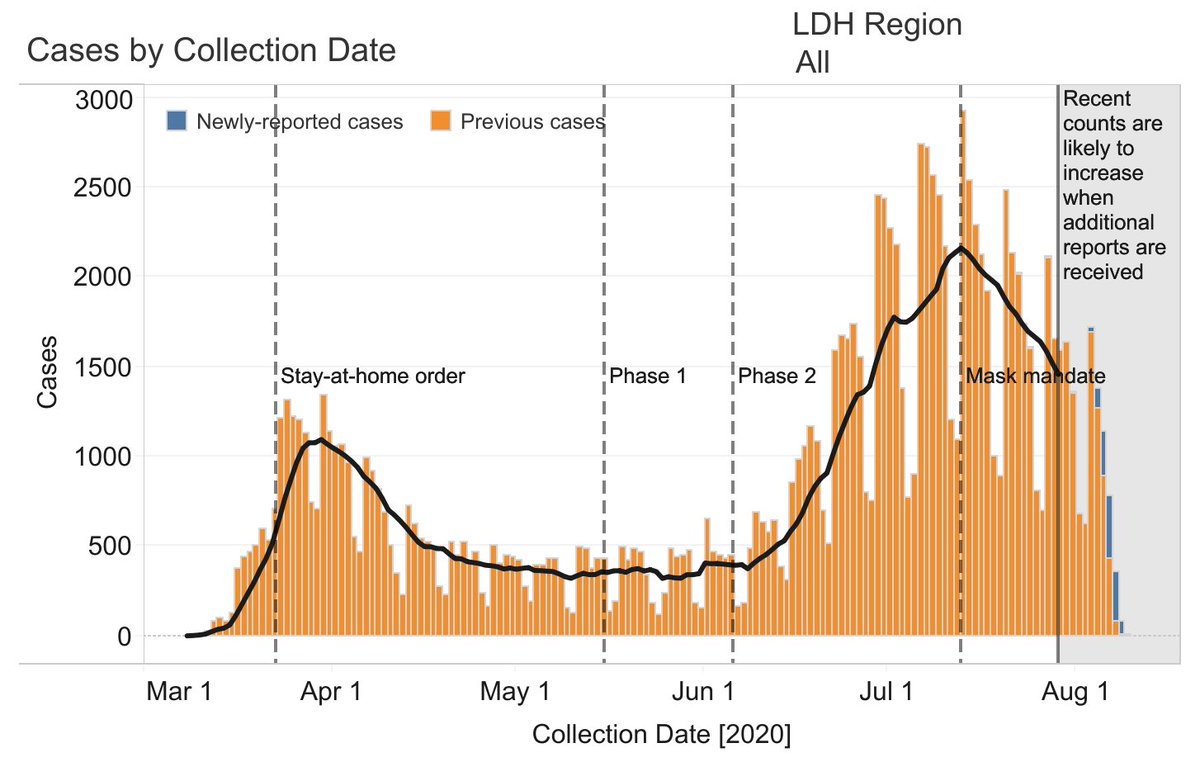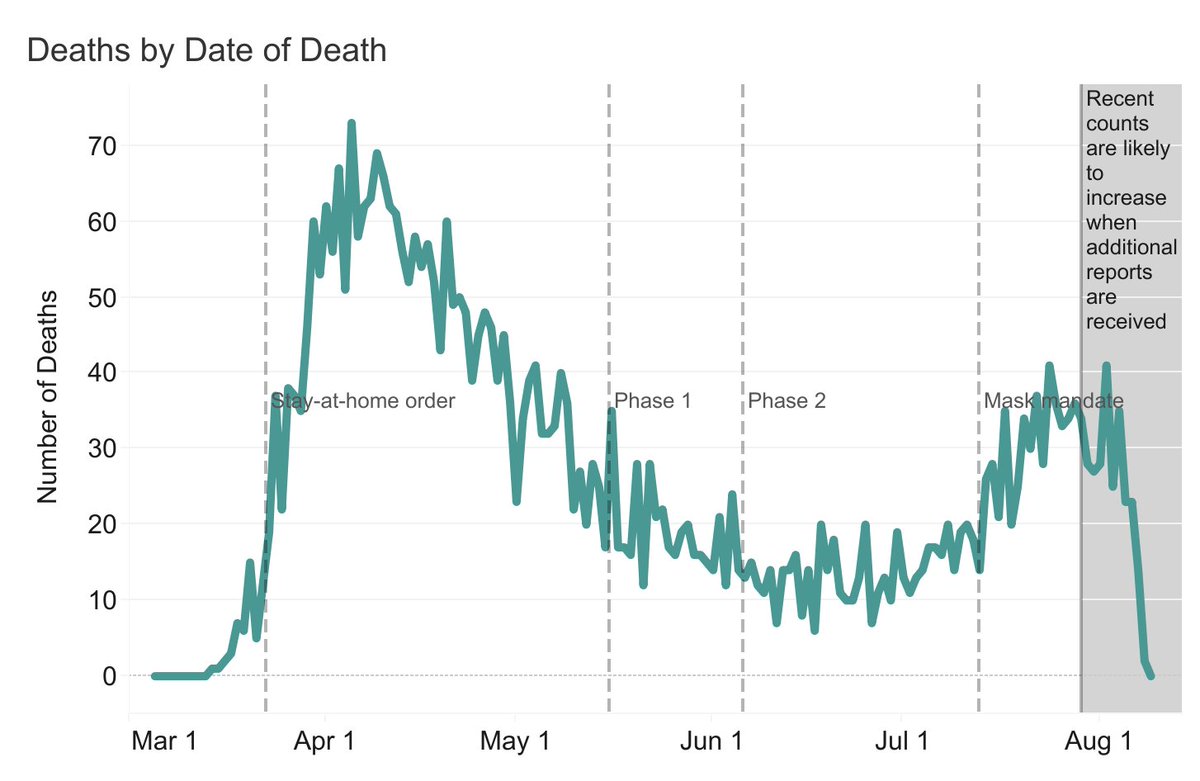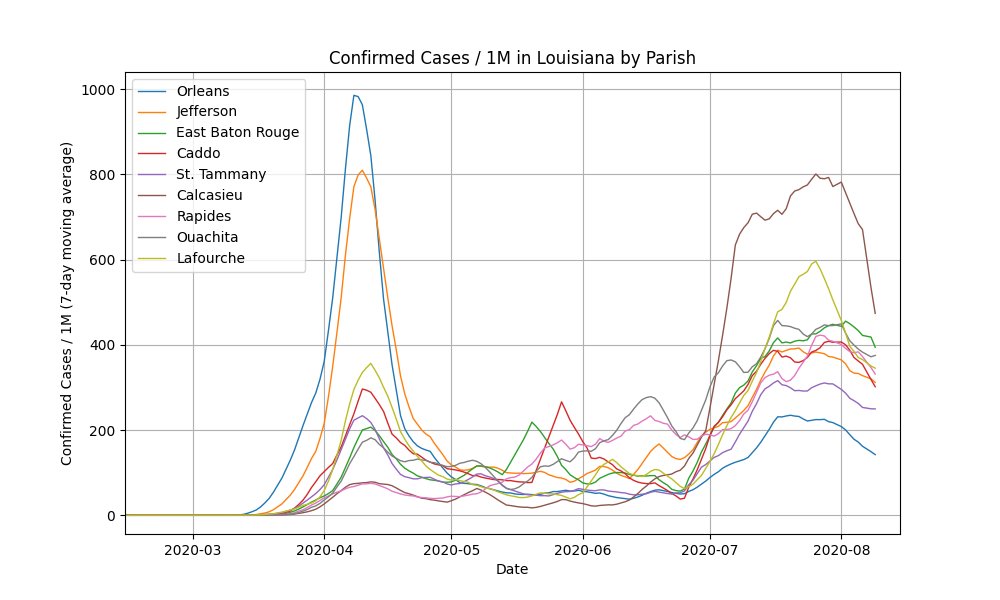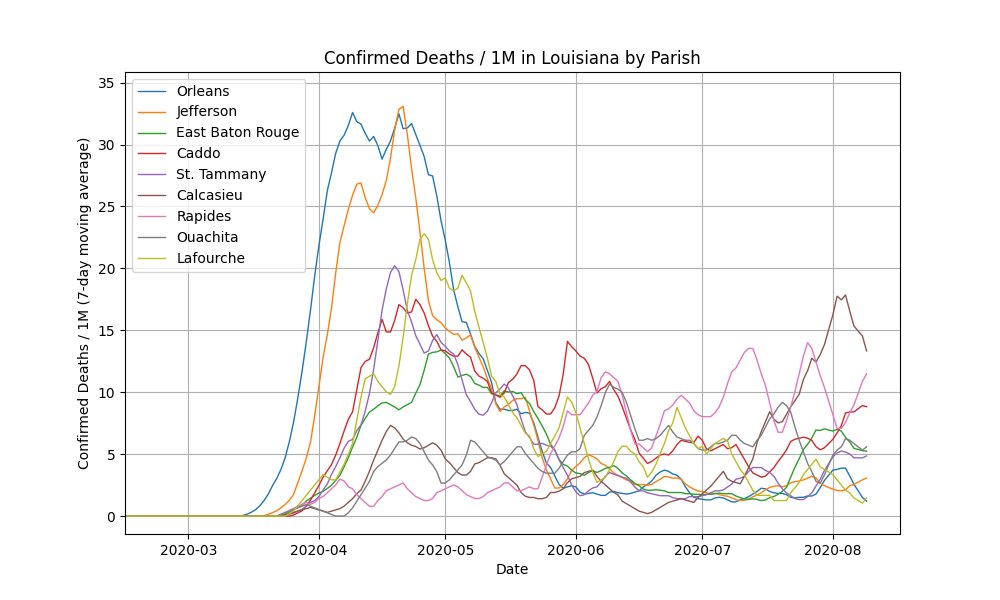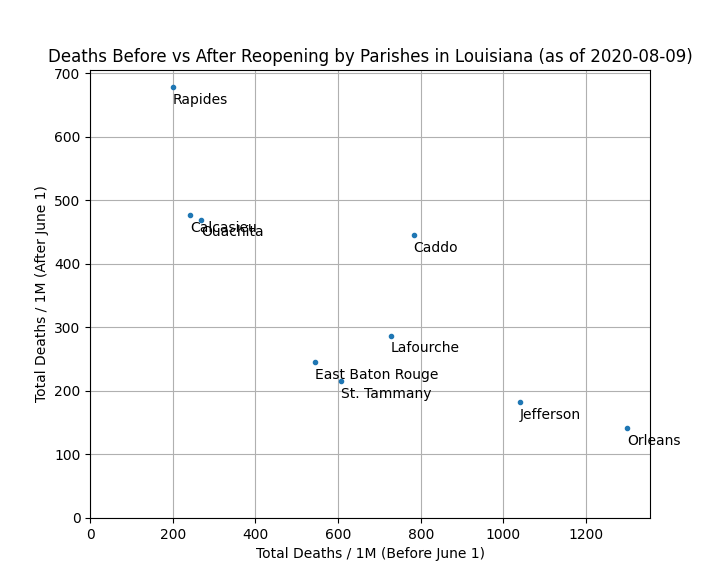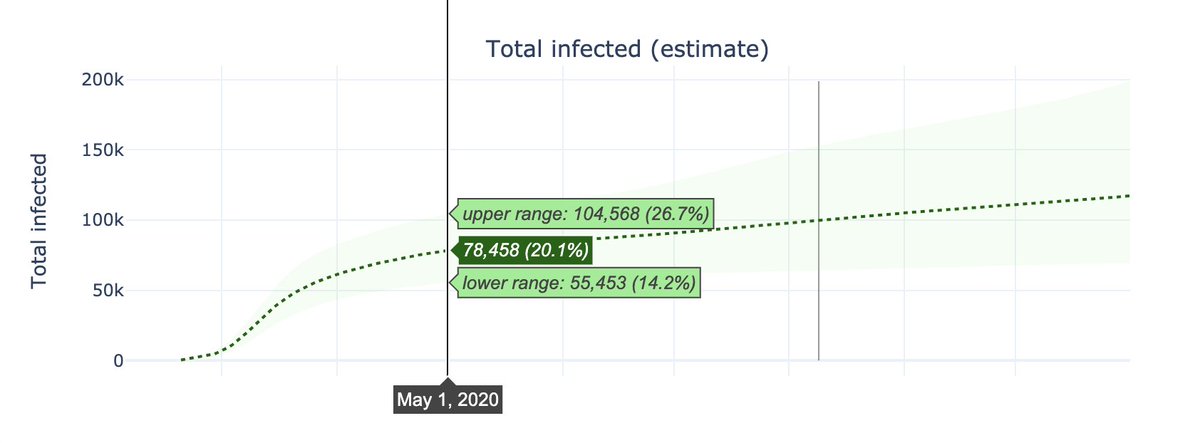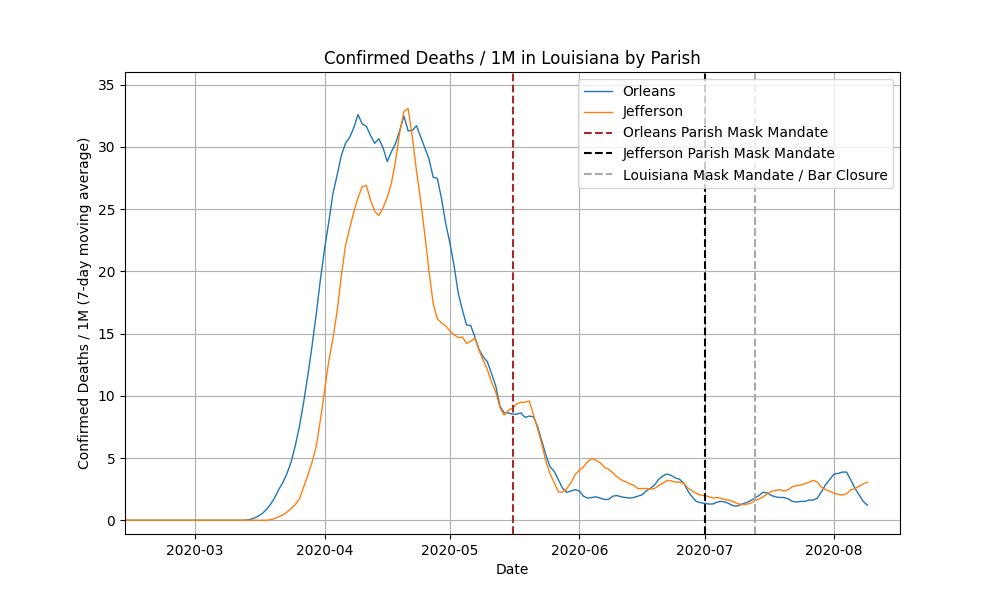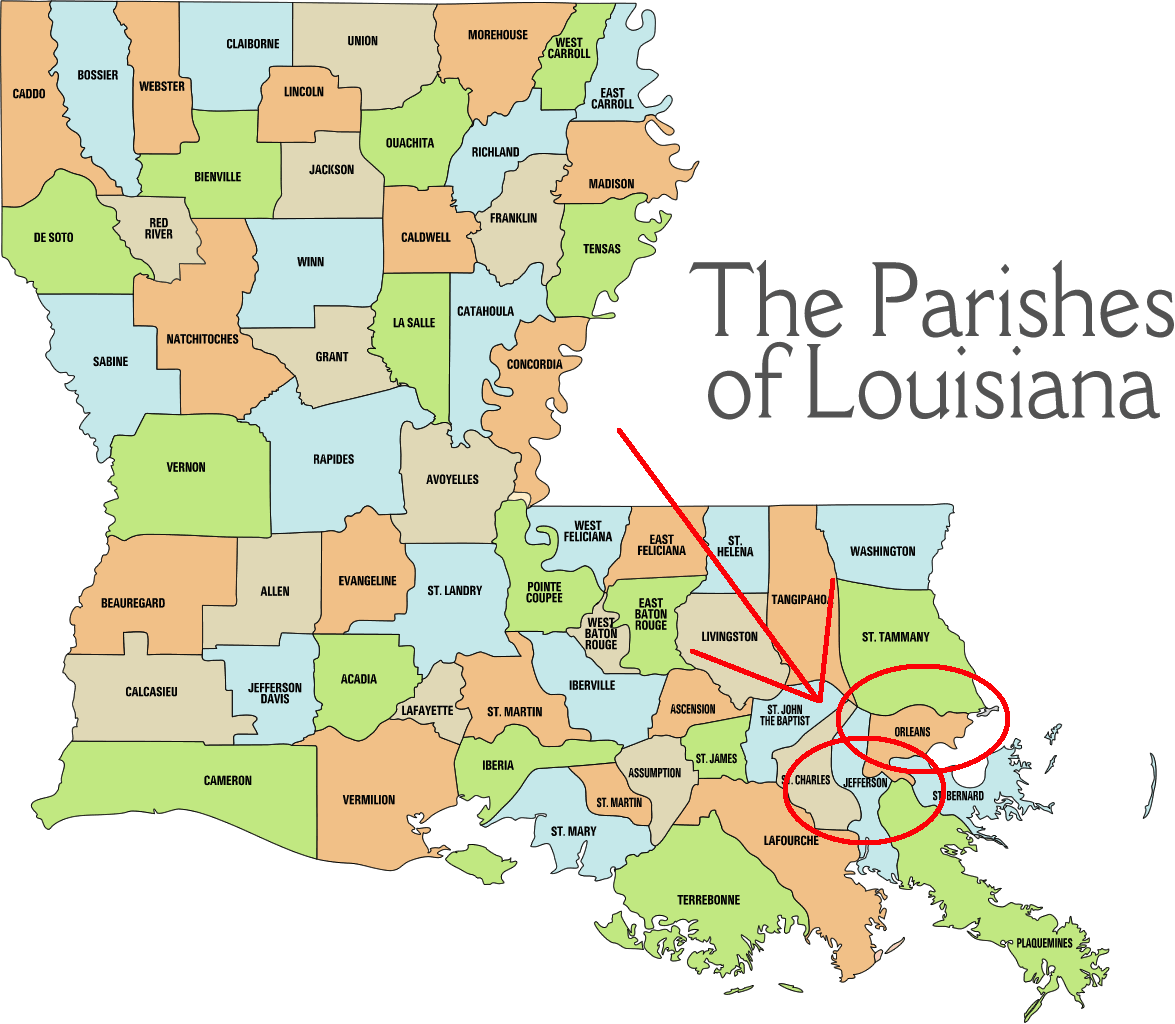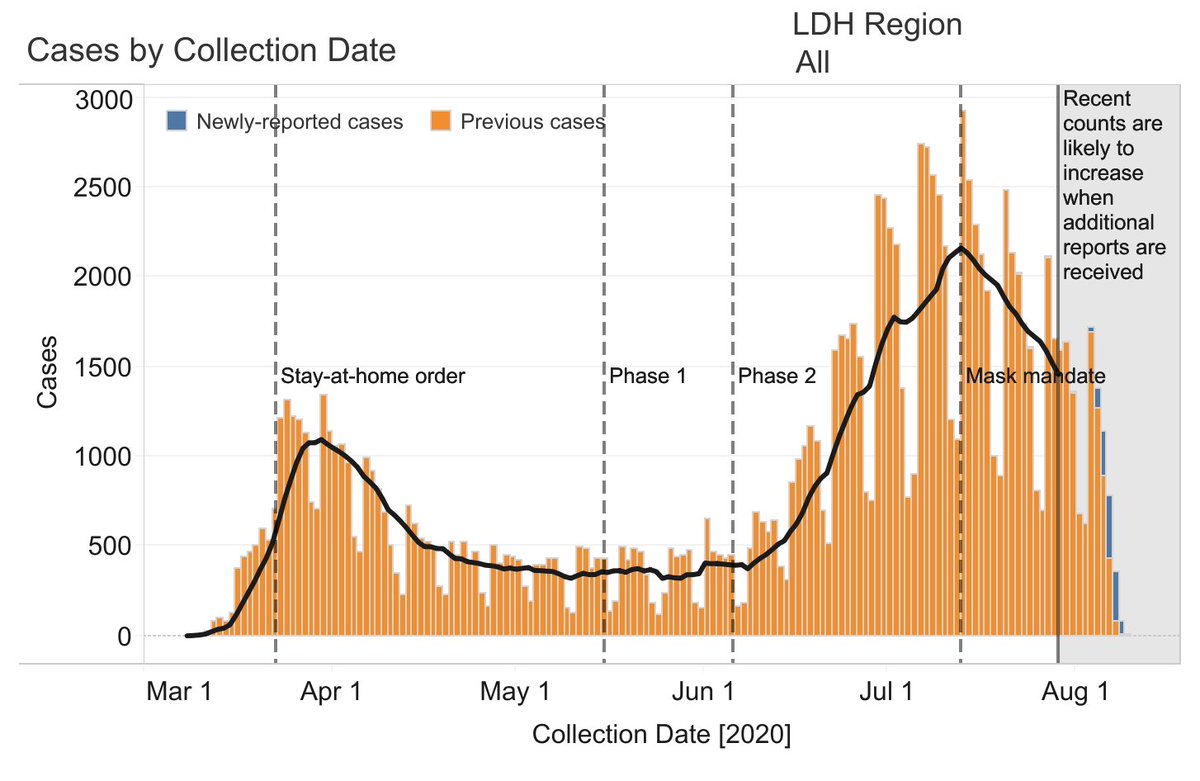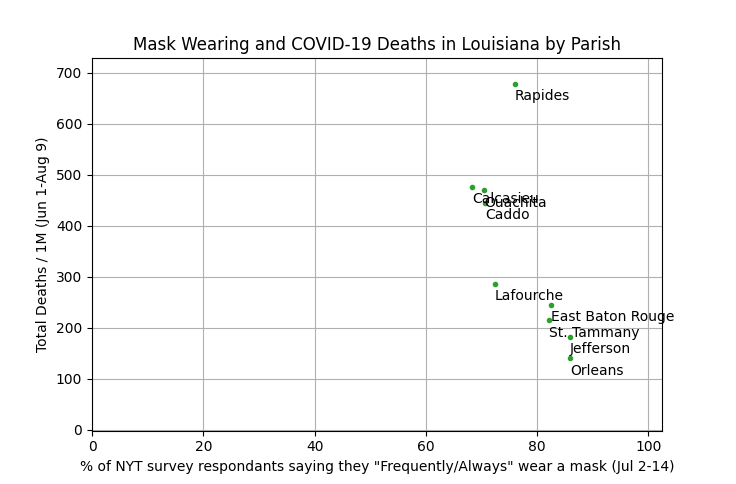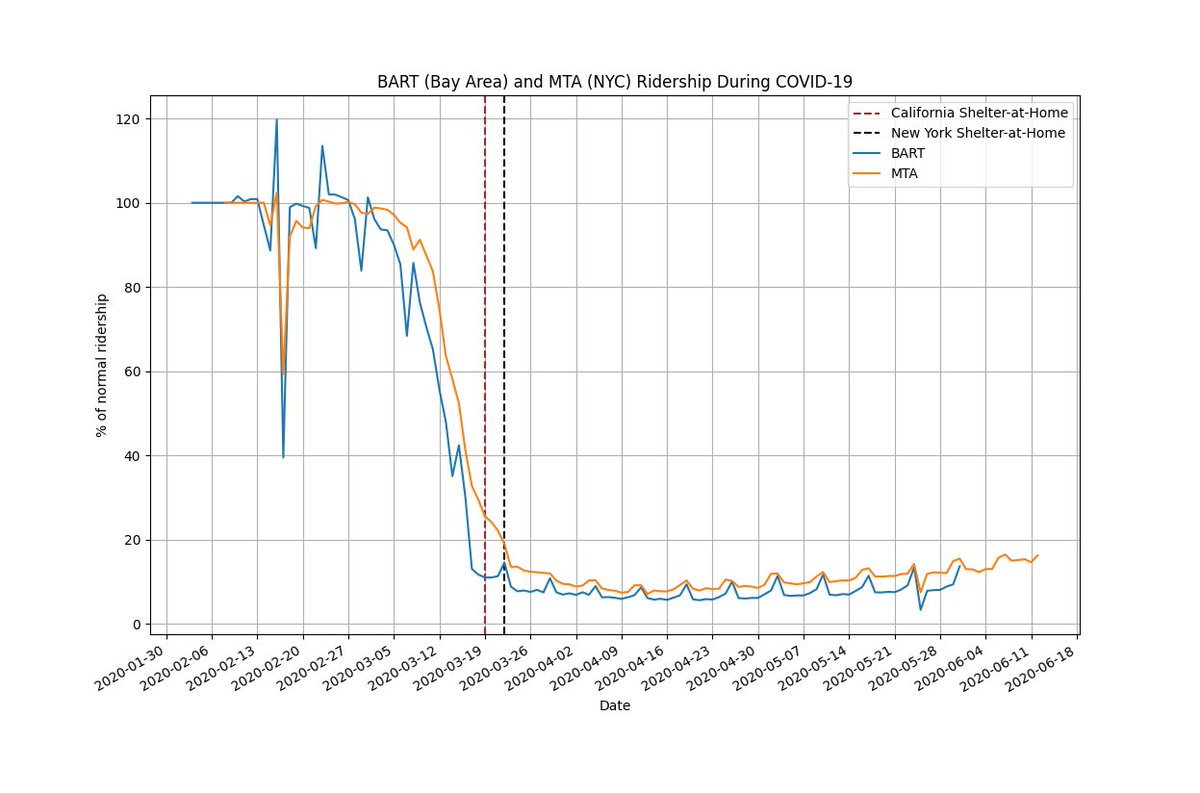There& #39;s been increasing discussion about the role of immunity vs behavior vs interventions in the spread of COVID-19.
Louisiana is a good case study because it& #39;s the only state that had two significant waves affecting a large proportion of its population.
Here& #39;s a closer look.
Louisiana is a good case study because it& #39;s the only state that had two significant waves affecting a large proportion of its population.
Here& #39;s a closer look.
On the surface, it seems like all of Louisiana was heavily impacted after reopening despite already experiencing a significant first wave.
But if you break it down by parishes (counties), the data tells a different story.
Plots source: @LADeptHealth
But if you break it down by parishes (counties), the data tells a different story.
Plots source: @LADeptHealth
The two parishes that were most significantly impacted in March/April, Orleans Parish (New Orleans) and Jefferson Parish, did not see a major second wave after reopening.
The majority of new cases & deaths in Louisiana come from parishes that were largely spared in March/April.
The majority of new cases & deaths in Louisiana come from parishes that were largely spared in March/April.
For parishes with >100 deaths, If we plot the total deaths per 1M from March-May with the total deaths per 1M from June-August, we see a clear negative correlation (r=-0.8).
Parishes that saw more deaths per capita in March-May largely saw fewer deaths per capita in June-August.
Parishes that saw more deaths per capita in March-May largely saw fewer deaths per capita in June-August.
So why could that be?
It could be that people in those parishes became more aware after the 1st wave and changed their behavior accordingly.
Or that a high level of immunity in a population helps curb further spread. I estimate ~20% of New Orleans had been infected by May 1.
It could be that people in those parishes became more aware after the 1st wave and changed their behavior accordingly.
Or that a high level of immunity in a population helps curb further spread. I estimate ~20% of New Orleans had been infected by May 1.
The truth is probably a combination of both. We& #39;ve seen a lot of discussion about policy interventions, but not as much discussion on independent behavioral changes and the role of population heterogeneity on immunity.
A piece on this by @dwallacewells: https://twitter.com/dwallacewells/status/1292529555417202688">https://twitter.com/dwallacew...
A piece on this by @dwallacewells: https://twitter.com/dwallacewells/status/1292529555417202688">https://twitter.com/dwallacew...
Regarding interventions, Orleans Parish (New Orleans) implemented a mask mandate on May 16. Jefferson Parish did not implement a mask mandate until July 1, 46 days later.
Yet, neither parishes saw a significant increase in deaths after reopening.
Yet, neither parishes saw a significant increase in deaths after reopening.
This is actually a fairly well designed control/test group, given the fact that Orleans/Jefferson Parish are neighbors in the same state.
There are some differences as well, namely the demographics and political leanings. Jefferson Parish also has a 10% larger population.
There are some differences as well, namely the demographics and political leanings. Jefferson Parish also has a 10% larger population.
If the mask mandate had a greater role in controlling the spread, then we would& #39;ve expected to see a steeper increase in cases and deaths in Jefferson Parish than in Orleans Parish.
But the current data does not corroborate that theory, at least not in Louisiana.
But the current data does not corroborate that theory, at least not in Louisiana.
As further evidence, Louisiana did not issue a state-wide mask mandate or close bars until July 13. By then, cases statewide had already plateaued.
Plot source: @LADeptHealth
Plot source: @LADeptHealth
Does that mean masks don& #39;t work? No. In fact, we see a negative correlation between mask wearing and deaths in LA. We use @UpshotNYT survey data from Jul 2-14 (before the state mask mandate).
But the difference b/w the highest and lowest is not large (18%).
h/t @Crimealytics
But the difference b/w the highest and lowest is not large (18%).
h/t @Crimealytics
Given the findings from above, I don& #39;t think there& #39;s currently enough evidence to support the fact that recent policy interventions (mask mandates, bar closures) were the main drivers behind the recent decrease in cases.
More discussion from last week: https://twitter.com/youyanggu/status/1291092311045283841">https://twitter.com/youyanggu...
More discussion from last week: https://twitter.com/youyanggu/status/1291092311045283841">https://twitter.com/youyanggu...
Just a few weeks ago, there was more widespread belief that not enough interventions were being put in place.
https://twitter.com/RBReich/status/1289650854841085952
Now,">https://twitter.com/RBReich/s... we& #39;re seeing more widespread praise for all of the interventions that were put in place.
But the level of intervention did not change.
https://twitter.com/RBReich/status/1289650854841085952
Now,">https://twitter.com/RBReich/s... we& #39;re seeing more widespread praise for all of the interventions that were put in place.
But the level of intervention did not change.
This understanding is not new. The lockdown in New York on March 22 was never the primary cause behind the flattening of the curve.
It was voluntarily human behavior that began more than two weeks prior (see graph). The lockdown helped.
Graph source: https://github.com/youyanggu/subway_ridership">https://github.com/youyanggu...
It was voluntarily human behavior that began more than two weeks prior (see graph). The lockdown helped.
Graph source: https://github.com/youyanggu/subway_ridership">https://github.com/youyanggu...
Hence, I think implications that recent policy interventions are largely responsible for bending the curve may have unintended consequences.
It may cause people to think that the interventions are enough to return to normal, when you likely also need behavior changes + immunity.
It may cause people to think that the interventions are enough to return to normal, when you likely also need behavior changes + immunity.
Caveat #1: I am not an epidemiologist nor a public health expert, so please listen to the health experts.
Caveat #2: From a statistical perspective, it is difficult to disentangle population immunity from behavior changes, because the two variables are likely collinear.
Caveat #2: From a statistical perspective, it is difficult to disentangle population immunity from behavior changes, because the two variables are likely collinear.
Caveat #3: The effects of immunity are likely strongly conditioned on the current level of social distancing and behavior.
If society were to "return to normal", then the effects of such immunity would be significantly reduced as the rate of transmission increases.
If society were to "return to normal", then the effects of such immunity would be significantly reduced as the rate of transmission increases.
Caveat #4: I am not making any claims about the role of interventions in the scenario where population immunity does not play a major role.
Caveat #5: I presented an example using data from Louisiana, but it may not be representative of the entire US.
Caveat #5: I presented an example using data from Louisiana, but it may not be representative of the entire US.
Caveat #6: I am not claiming that all policy interventions don& #39;t work. Nor do I make any claims about existing restrictions (e.g. capacity limits, large gathering bans).
Caveat #7: I apologize in advance if I said anything inaccurate. Please let me know and I will correct it.
Caveat #7: I apologize in advance if I said anything inaccurate. Please let me know and I will correct it.
As a data scientist my job is to analyze and interpret data. I always appreciate constructive feedback backed by data.
Anecdotal evidence can be useful. But if the data does not support the anecdotal evidence, we have a responsibility as scientists to adjust our priors.
Anecdotal evidence can be useful. But if the data does not support the anecdotal evidence, we have a responsibility as scientists to adjust our priors.
The first rule in data science is: correlation != causation.
To conclude, I think we should be careful in attributing causations behind recent declines in cases when they are merely correlations. We cannot cut corners, even if it& #39;s a means to an end.
More research is needed.
To conclude, I think we should be careful in attributing causations behind recent declines in cases when they are merely correlations. We cannot cut corners, even if it& #39;s a means to an end.
More research is needed.

 Read on Twitter
Read on Twitter